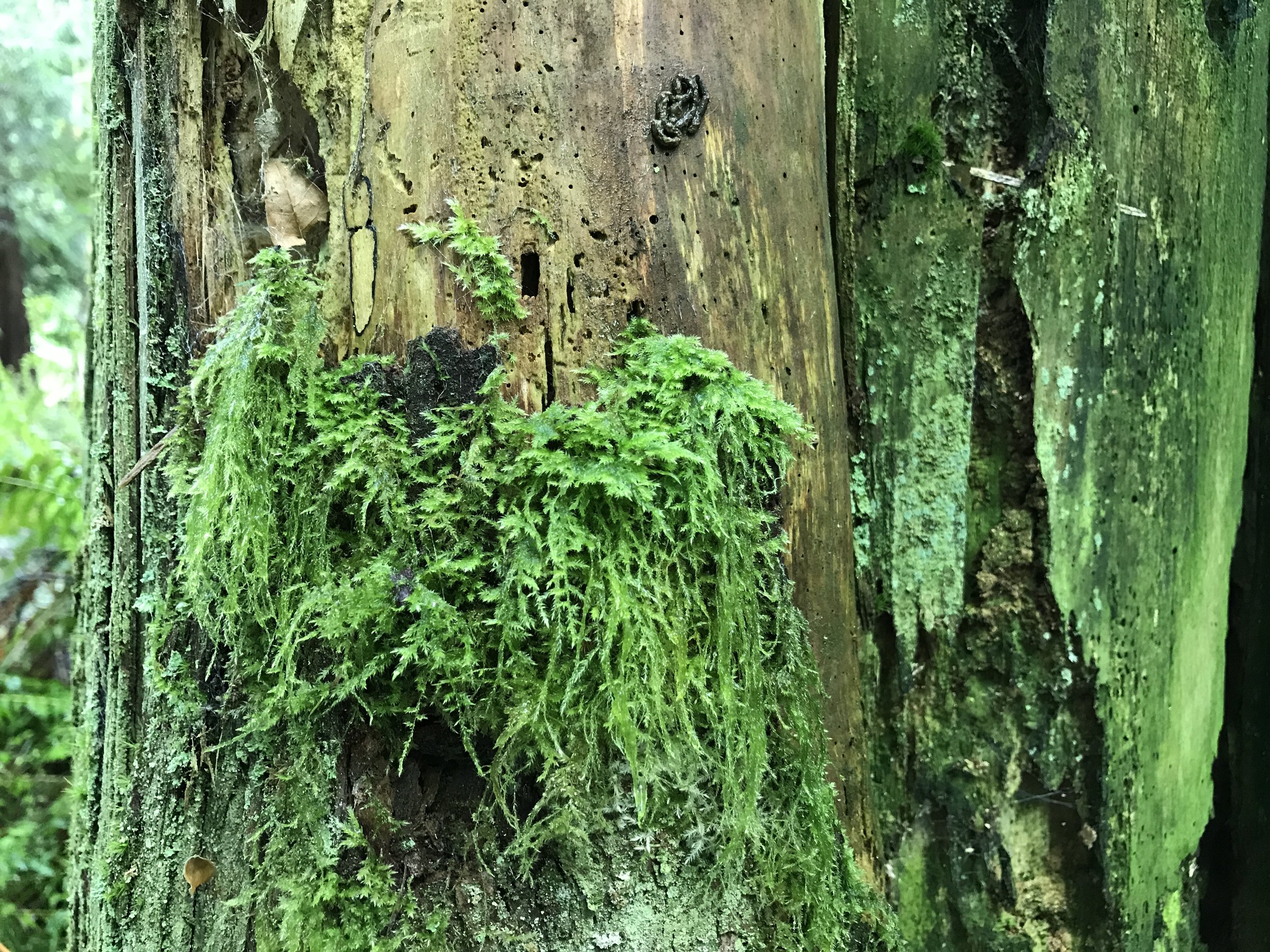Spring Hymn: In Praise of Green
Arriving at the far shore of winter last week was a wet affair. It rained on the Vernal Equinox. Heavily. I took a long walk late in the afternoon with a friend and my dog, and after a couple hours we were, all three, drenched and splattered with mud.
The green was as saturating as the rain on Spring’s first day. We wandered for nearly two hours; I could’ve gone on for two more–feeling the verdure of this place working its way across the semipermeable membranes that envelope me, into my bloodstream. A sense of ease, a slowing down. A bit of it cold induced.
Green is a constant in the Pacific Northwest. It’s likely a big part of what drew me to this place years ago, and likely a big part of what’s held me here since. The cedar, the fir, the hemlock, the sword fern–all green, all year long. The lichen that drips from winter-bare branches of deciduous trees, the moss that grows in tufts of varying densities and hues on their trunks: green. The jewel-tone green and sheen of madrona leaves and evergreen huckleberries. The lime green of the mosses that love the tipping alder and the bare patches in the grass most.
In a week spent away from home recently, in the Midwest which was still very much in winter, I was struck by the absence of green in the forest, which I was lucky enough to have nearby and be in almost daily. But I looked for green and didn’t find it, except in the expanses of lawn where last year’s grass had been beaten and bruised by winter for three months. What a strange experience–I felt it deeply that week–to be in a place, the woods, entirely without its signature color.
I’ve come to the sense that I’m not only bathing in but breathing this year round green. I’m realizing that without it I can’t seem to find my breath.
Life is a green madness just now…
–Vernor Vinge
At home again on Bainbridge Island, the first spring greens are layering into the landscape. The red huckleberry canes have brightened to their seasonal lime. Their first leaves are spreading in the lengthening light. The alder are dotted with fat green buds: on-the-verge, ready to unfurl and get down to the business of photosynthesizing.
The meadow is suddenly lush. New blades of grass poke up everywhere. The ocean spray’s annual leafing out is underway—that same lime green of the other young leaves, peeking from beneath last year’s spent and rusted blooms.
Pioneering sprigs of arugula have taken skyward in the planter on the balcony where we grow our salad greens, safe from browsing deer. Spring is on. Green is off and running.
“Foliage colors improve relaxation and emotional status of university students from different countries,” a 2021 study claims in its title. And the results are interesting: overall, being exposed to foliage in a variety of green tones enhanced feelings of relaxation and calmness in a group of university students. But the specific tones to which the study’s participants most positively responded was a distinct cultural preference.
Mightn’t this suggest that place plays a role in which green tones we’re drawn to, I wonder? The study doesn’t speculate, of course, it merely suggests more research be done. And urgently: noting that depression, “is expected to be the key driver of disease burden around the world by 2030.”
I can’t help but muse on. Is it that foliage is green? Or that green is foliage–the color of sustenance, of food security, of life?
It’s impossible to detach tone from texture from tang. Green is more than just visual stimulation–of a greater variety than any other color available to the human eye. It’s as many tastes. It’s as many feels. It’s malachite and chlorophyll. It’s braille and silk and fuzz. Its textures layer onto its sharpnesses of a thousand delicious varieties: oxalic acid, serrano, pea shoot, peppermint.
I’m craving green right now.
I made a soup inspired by it over the weekend, roasted hatch chiles in white beans with an all-things-green emulsion–cilantro, lime zest and juice, jalapeño, olive oil–drizzled on top.
We talked that night of drinking the spring nettles in tea. I made a mental note to tuck leather garden gloves in my pocket before my next walk in the woods.
And soon come the fir tips. And soon the fiddleheads. And soon the peas and tender lettuces.
Soothing nervous systems the hemisphere over with the assurance that this weary world is still committed to its enduring cycles, still nourishing us, still lifing out all around us with its signature green on green on green.


